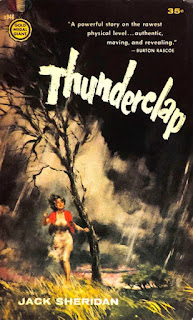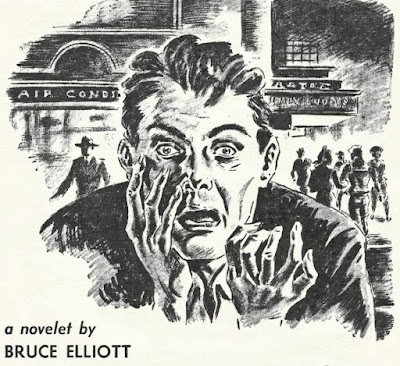Lancer, and later Ace, contributed to an influx of sword-and-sorcery pop-culture due to their paperback releases of Conan and other Robert E. Howard stories. The genre exploded with television, movies, and countless paperback novels featuring shirtless barbarians imitating Conan. By the 1970s, sword-and-sorcery was everywhere, so it was just a matter of time before the comic book industry seized their share of the market.
With the success of Conan on the pages of Marvel, DC Comics became busy creating sword-and-sorcery titles that would compete in the hectic heroic-fantasy realm. In 1975, the company launched their creations, eight new titles that featured scantily-clad heroes holding sharp, gleaming swords. These books were Warlord, Beowulf, Dragon Slayer, Tor, Nightmaster, Starfire, Stalker, and today's topic, Claw the Unconquered.
With Claw the Unconquered, the creative team made the decision to hone in on John Buscema’s Conan artwork. Who would be the best fit for Claw's artistic design and presentation? None other than Ernie Chan, an artist that spent the prior two years inking John Buscema’s art on Conan the Barbarian. Chan created the covers for the first nine issues, and penciled the interior pages on the first seven before giving the reigns to other artists like Joe Kubert and Keith Giffen.
Gracing the cover of Claw the Unconquered's first issue, titled “The Sword and the Silent Scream”, is a black-haired muscular barbarian carefully straddling a vulnerable young woman. Without the robust Claw logo, one glance would surely register that the book is another Conan issue. But, that was the point – to capture the dedicated readers of Conan the Barbarian and Savage Sword of Conan the Barbarian. Chan perfected this.
Chan's co-creator of Claw was David Michelinie, who contributed to the creation of some of comics greatest characters in Venom, Carnage, War Machine, and Ant-Man. Michelinie and Chan had worked collectively on other DC books like House of Mystery and House of Secrets. Michelinie's concept was that Claw existed in a place called Pytharia, a land that resembles ancient Earth. Fans of Conan may see some similarities with Pytharia and Robert E. Howard's own landscape found in the Hyborian Age. In essence, it is a sprawling world filled with heroes and villains – noblemen, savages, evil sorcerers, terrifying creatures, and the obligatory beautiful women that need saving.
At the forefront, like Howard's own stories, is the endless musical chairs played by politicians and their rivals. Conan, against his better judgment, seemingly always found himself embroiled in a political rivalry turned violent. Claw mirrors that same participation, which ultimately sets the table for the character's origin tale in the debut issue.
In the first three pages, readers learn that Claw's real name is Valcan and that he literally wears a red glove over his right fist, indicating early on that something is different about his hand. Claw is strolling through Ichar, the throne city of Pytharia when a thief attempts to rob him. Claw throws the poor soul through a window, then orders meat and wine. His muscles, good looks, and temperament gains an invitation from the attractive waitress to join her upstairs. But, she accidentally dislodges his glove and discovers he has a hairy hand with...claws! Later, it is revealed that the waitress was purposefully trying to verify Claw's identity in an effort to satisfy her master, an innkeeper named Tarmag.
In the streets, Tarmag has his henchmen attack Claw. Fortunately, Claw disposes of them all, but he mistakenly lets Tarmag live (a non-Conan move). The man journeys to Castle Darkmorn (what a name!) and tells (King) Occulas of the Yellow Eye the whereabouts of Claw. His reward? An instant fatal backstabbing by Occulas' guards. But why does Occulas want Claw?
In a flashback from years ago, Prince Occulas is plotting to take the King's throne and learns from an oracle (named in the third issue as Miftung) that the only thing standing in his way is a man with a bizarre hand. Occulas has a peasant man tortured to learn that someone named Kregar of Kanon Wood has a funny hand. He bribes the King's men to go out and kill Kregar and his family. On page 13, where these events unfold, readers see that Kregar does have a hand that resembles Claw's. While Kregar and his family are all murdered, the men left behind a small infant that had a clawed right hand. Off the page, an angelic hand reaches for the baby and says that “your time is not yet come, for there are tasks awaiting that only you may perform.”
Occulas fatally poisons the King, snatches the crown, and for years thrusts Pytharia into desolate servitude. An older, crueler Occulas is then shown speaking to the oracle about a new threat that arises, a man named Valcan that has a deformity that has earned him the name Claw. Sensing this new threat, the story then circles back to the beginning (present day) as Occulas sends another of his henchmen to kill Claw. With the aid of the beautiful waitress, Claw is deceptively led to the Temple of Kann where a giant beast is awakened with a magical gem. Claw fights the monster, and then leaves the temple as the waitress is left to die.
What readers gather from the first issue is that the through-story will be Occulas attempting to seek and destroy Claw as the hero journeys from place to place fighting the good fight for the people. The book takes on some other genres, like the traditional western monomyth, science-fiction, and fantasy. Additionally, Claw can't remember his past, so readers will be mysteified as to who the angel was that saved Claw from death as an infant. Through his journeys, he is searching to learn more about his origin and why he is destined to do great things. Magical elements regarding the claw and its purpose begin to shed some light on Claw's destiny.
Like most of the other sword-and-sorcery books that DC launched, Claw the Unconquered was short-lived. The original run lasted just a total of 12 issues, ending in September 1978. The character made another appearance in 1981 in Warlord issues #48-49.
Claw continues to exist in comic book continuity. He has randomly appeared in the modern pages of Wonder Woman, Justice League, and Swamp Thing. In a completely different character, there were elements of Claw used for the Primal Force comic also published by DC. The character was re-introduced to Conan fans through a rebirth by Dynamite Entertainment. Claw teamed with Red Sonja in the four-book miniseries Devil's Hands. Additionally, there was a spin-off of that series simply called Claw the Unconquered, which ran a total of six issues and was written by Chuck Dixon.
While I can't speak on the title after 1978, I highly encourage you to read the full 12-issue run of the original DC comic. If you enjoy 1970s sword-and-sorcery literature, then this is well worth the nostalgic trip through time.
Buy a copy of this book HERE
























